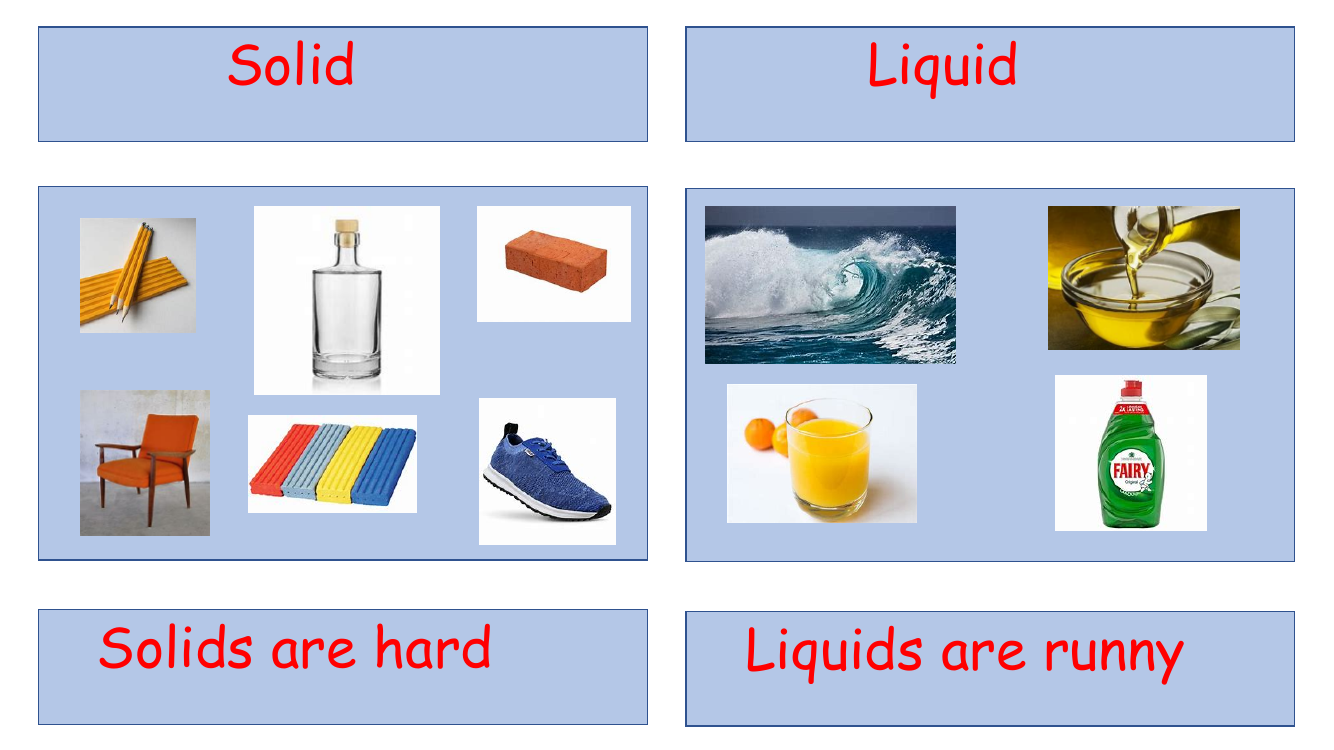Liquids - Solids Liquids and Gases

Science Resource Description
In the fundamental study of matter, solids, liquids, and gases are the three primary states that are commonly observed in our everyday experiences. Solids are characterised by their rigidity and fixed shape; they are 'hard' and maintain their form regardless of the container they are placed in. This is due to the closely packed particles that make up a solid, which are arranged in a specific pattern and have limited movement. The particles vibrate in place but do not move around freely, which gives solids their definite shape and volume.
Liquids, on the other hand, are 'runny' or fluid in nature. Unlike solids, liquids take on the shape of the container they are in, flowing to fill the bottom of the container. This happens because, while the particles in a liquid are still close together, they can move and slide past one another, allowing the liquid to change shape while maintaining a constant volume. Gases are typically invisible and fill the entire space of their container. The particles in a gas are much farther apart compared to those in solids and liquids, and they move freely in all directions. This high-energy state of matter results in no fixed shape or volume, with gases expanding to fill any available space.





